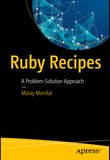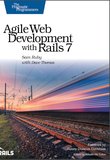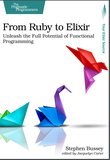-
.NET (.NET Core)
-
1C
-
APL
-
AWK
-
Agda
-
Agile/Scrum
-
Alef
-
Assembler
-
Basic
-
Beta Programming Language
-
Big Data/DataScience
-
C
-
C#
-
C++
-
CSS
-
Cobol
-
Crystal
-
D
-
Dart
-
DataBase (SQL)
-
Delphi
-
F#
-
Flutter
-
Fortran
-
GPT/AI/ИИ
-
GameDev
-
Git
-
Go (Golang)
-
HTML
-
Hacking and Security
-
Haskell
-
Java
-
JavaScript (JS)
-
Julia
-
Kotlin
-
Machine Learning (ML)
-
Natural language processing (NLP)
-
PHP
-
Pascal
-
Python
-
R
-
Ruby
-
Rust
-
Scratch
-
Swift
-
UML
-
UX/UI
-
Visual Basic
-
Wolfram
-
XML
-
АСУ
-
Проектирование/System Design
-
Сети/Network
-
Схемотехника/электронные схемы
-
.NET (.NET Core)
-
1C
-
APL
-
AWK
-
Agda
-
Agile/Scrum
-
Alef
-
Assembler
-
Basic
-
Beta Programming Language
-
Big Data/DataScience
-
C
-
C#
-
C++
-
CSS
-
Cobol
-
Crystal
-
D
-
Dart
-
DataBase (SQL)
-
Delphi
-
F#
-
Flutter
-
Fortran
-
GPT/AI/ИИ
-
GameDev
-
Git
-
Go (Golang)
-
HTML
-
Hacking and Security
-
Haskell
-
Java
-
JavaScript (JS)
-
Julia
-
Kotlin
-
Machine Learning (ML)
-
Natural language processing (NLP)
-
PHP
-
Pascal
-
Python
-
R
-
Ruby
-
Rust
-
Scratch
-
Swift
-
UML
-
UX/UI
-
Visual Basic
-
Wolfram
-
XML
-
АСУ
-
Проектирование/System Design
-
Сети/Network
-
Схемотехника/электронные схемы
Меню
Practical Object-Oriented Design: Practical Object-Oriented Design in Ruby. 2 Ed

Автор: Metz Sandi
Дата выхода: 2019
Издательство: Pearson Education Limited
Количество страниц: 281
Размер файла: 1,4 МБ
Тип файла: PDF
Добавил: codelibs
Cover
Half Title
Title Page
Copyright Page
Dedication
Contents
Introduction
Acknowledgments
About the Author
1 Object-Oriented Design
1.1 In Praise of Design
1.1.1 The Problem Design Solves
1.1.2 Why Change Is Hard
1.1.3 A Practical Definition of Design
1.2 The Tools of Design
1.2.1 Design Principles
1.2.2 Design Patterns
1.3 The Act of Design
1.3.1 How Design Fails
1.3.2 When to Design
1.3.3 Judging Design
1.4 A Brief Introduction to Object-Oriented Programming
1.4.1 Procedural Languages
1.4.2 Object-Oriented Languages
1.5 Summary
2 Designing Classes with a Single Responsibility
2.1 Deciding What Belongs in a Class
2.1.1 Grouping Methods into Classes
2.1.2 Organizing Code to Allow for Easy Changes
2.2 Creating Classes That Have a Single Responsibility
2.2.1 An Example Application: Bicycles and Gears
2.2.2 Why Single Responsibility Matters
2.2.3 Determining If a Class Has a Single Responsibility
2.2.4 Determining When to Make Design Decisions
2.3 Writing Code That Embraces Change
2.3.1 Depend on Behavior, Not Data
2.3.2 Enforce Single Responsibility Everywhere
2.4 Finally, the Real Wheel
2.5 Summary
3 Managing Dependencies
3.1 Understanding Dependencies
3.1.1 Recognizing Dependencies
3.1.2 Coupling Between Objects (CBO)
3.1.3 Other Dependencies
3.2 Writing Loosely Coupled Code
3.2.1 Inject Dependencies
3.2.2 Isolate Dependencies
3.2.3 Remove Argument-Order Dependencies
3.3 Managing Dependency Direction
3.3.1 Reversing Dependencies
3.3.2 Choosing Dependency Direction
3.4 Summary
4 Creating Flexible Interfaces
4.1 Understanding Interfaces
4.2 Defining Interfaces
4.2.1 Public Interfaces
4.2.2 Private Interfaces
4.2.3 Responsibilities, Dependencies, and Interfaces
4.3 Finding the Public Interface
4.3.1 An Example Application: Bicycle Touring Company
4.3.2 Constructing an Intention
4.3.3 Using Sequence Diagrams
4.3.4 Asking for “What” Instead of Telling “How”
4.3.5 Seeking Context Independence
4.3.6 Trusting Other Objects
4.3.7 Using Messages to Discover Objects
4.3.8 Creating a Message-Based Application
4.4 Writing Code That Puts Its Best (Inter)Face Forward
4.4.1 Create Explicit Interfaces
4.4.2 Honor the Public Interfaces of Others
4.4.3 Exercise Caution When Depending on Private Interfaces
4.4.4 Minimize Context
4.5 The Law of Demeter
4.5.1 Defining Demeter
4.5.2 Consequences of Violations
4.5.3 Avoiding Violations
4.5.4 Listening to Demeter
4.6 Summary
5 Reducing Costs with Duck Typing
5.1 Understanding Duck Typing
5.1.1 Overlooking the Duck
5.1.2 Compounding the Problem
5.1.3 Finding the Duck
5.1.4 Consequences of Duck Typing
5.2 Writing Code That Relies on Ducks
5.2.1 Recognizing Hidden Ducks
5.2.2 Placing Trust in Your Ducks
5.2.3 Documenting Duck Types
5.2.4 Sharing Code between Ducks
5.2.5 Choosing Your Ducks Wisely
5.3 Conquering a Fear of Duck Typing
5.3.1 Subverting Duck Types with Static Typing
5.3.2 Static versus Dynamic Typing
5.3.3 Embracing Dynamic Typing
5.4 Summary
6 Acquiring Behavior through Inheritance
6.1 Understanding Classical Inheritance
6.2 Recognizing Where to Use Inheritance
6.2.1 Starting with a Concrete Class
6.2.2 Embedding Multiple Types
6.2.3 Finding the Embedded Types
6.2.4 Choosing Inheritance
6.2.5 Drawing Inheritance Relationships
6.3 Misapplying Inheritance
6.4 Finding the Abstraction
6.4.1 Creating an Abstract Superclass
6.4.2 Promoting Abstract Behavior
6.4.3 Separating Abstract from Concrete
6.4.4 Using the Template Method Pattern
6.4.5 Implementing Every Template Method
6.5 Managing Coupling between Superclasses and Subclasses
6.5.1 Understanding Coupling
6.5.2 Decoupling Subclasses Using Hook Messages
6.6 Summary
7 Sharing Role Behavior with Modules
7.1 Understanding Roles
7.1.1 Finding Roles
7.1.2 Organizing Responsibilities
7.1.3 Removing Unnecessary Dependencies
7.1.4 Writing the Concrete Code
7.1.5 Extracting the Abstraction
7.1.6 Looking Up Methods
7.1.7 Inheriting Role Behavior
7.2 Writing Inheritable Code
7.2.1 Recognize the Antipatterns
7.2.2 Insist on the Abstraction
7.2.3 Honor the Contract
7.2.4 Use the Template Method Pattern
7.2.5 Preemptively Decouple Classes
7.2.6 Create Shallow Hierarchies
7.3 Summary
8 Combining Objects with Composition
8.1 Composing a Bicycle of Parts
8.1.1 Updating the Bicycle Class
8.1.2 Creating a Parts Hierarchy
8.2 Composing the Parts Object
8.2.1 Creating a Part
8.2.2 Making the Parts Object More Like an Array
8.3 Manufacturing Parts
8.3.1 Creating the PartsFactory
8.3.2 Leveraging the PartsFactory
8.4 The Composed Bicycle
8.5 Deciding between Inheritance and Composition
8.5.1 Accepting the Consequences of Inheritance
8.5.2 Accepting the Consequences of Composition
8.5.3 Choosing Relationships
8.6 Summary
9 Designing Cost-Effective Tests
9.1 Intentional Testing
9.1.1 Knowing Your Intentions
9.1.2 Knowing What to Test
9.1.3 Knowing When to Test
9.1.4 Knowing How to Test
9.2 Testing Incoming Messages
9.2.1 Deleting Unused Interfaces
9.2.2 Proving the Public Interface
9.2.3 Isolating the Object under Test
9.2.4 Injecting Dependencies Using Classes
9.2.5 Injecting Dependencies as Roles
9.3 Testing Private Methods
9.3.1 Ignoring Private Methods during Tests
9.3.2 Removing Private Methods from the Class under Test
9.3.3 Choosing to Test a Private Method
9.4 Testing Outgoing Messages
9.4.1 Ignoring Query Messages
9.4.2 Proving Command Messages
9.5 Testing Duck Types
9.5.1 Testing Roles
9.5.2 Using Role Tests to Validate Doubles
9.6 Testing Inherited Code
9.6.1 Specifying the Inherited Interface
9.6.2 Specifying Subclass Responsibilities
9.6.3 Testing Unique Behavior
9.7 Summary
Afterword
Index
This book will mean different things to readers of different backgrounds. Those already familiar with OOD will find things to think about, possibly encounter some new points of view, and probably disagree with a few of the suggestions. Because there is no final authority on OOD, challenges to the principles (and to this author) will improve the understanding of all. In the end, you must be the arbiter of your own designs; it is up to you to question, to experiment, and to choose.While this book should be of interest to many levels of reader, it is written with the particular goal of being accessible to novices. If you are one of those novices, this part of the introduction is especially for you. Know this: Object-oriented design is not black magic. It is simply things you don’t yet know. The fact that you’ve read this far indicates you care about design; this desire to learn is the only prerequisite for benefiting from this book.Chapters 2 through 9 explain OOD principles and provide very explicit programming rules; these rules will mean different things to novices than they mean to experts.If you are a novice, start out by following these rules in blind faith if necessary. This early obedience will stave off disaster until you can gain enough experience to make









